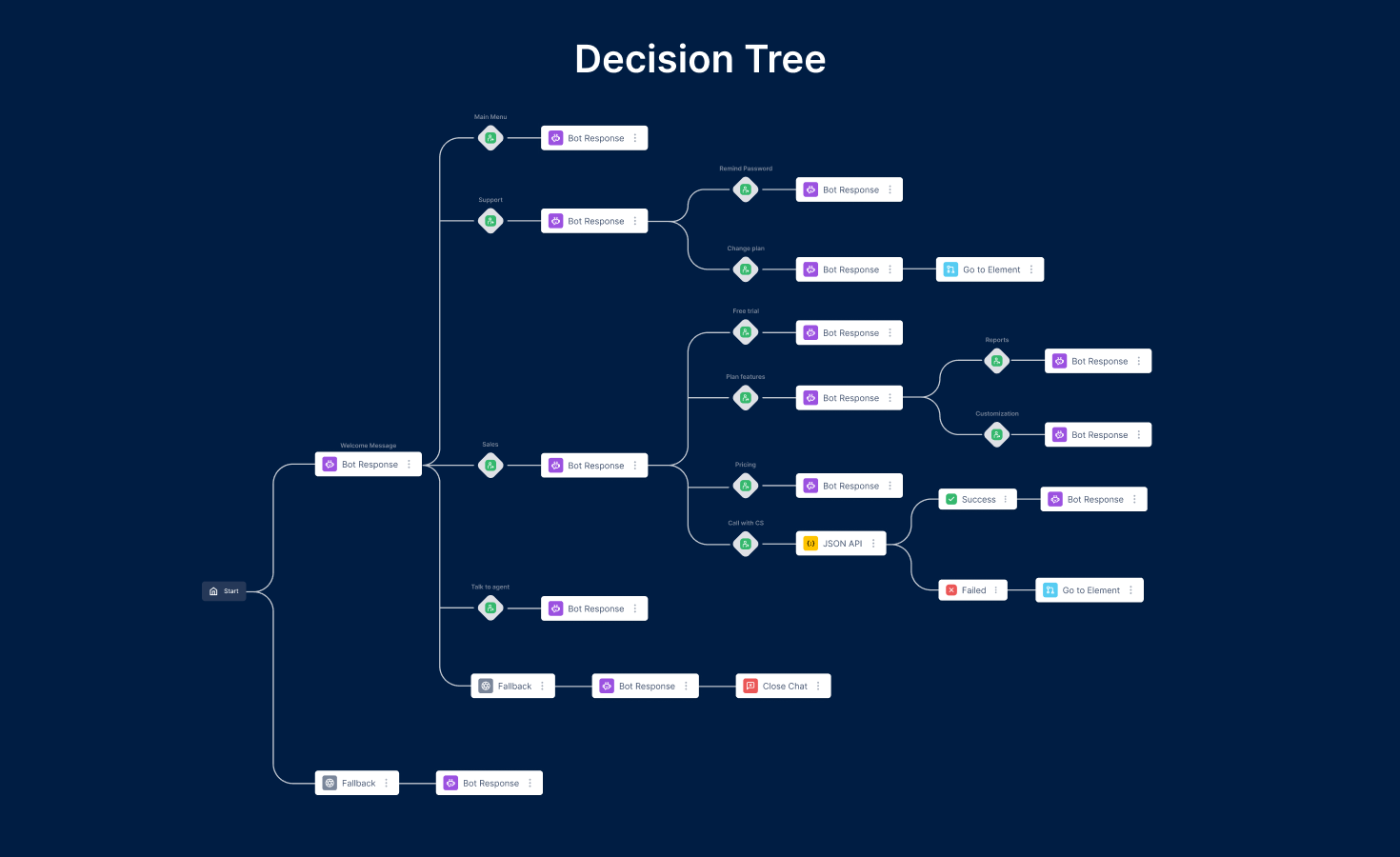Have you ever wondered how a technology like a chatbot is able to communicate with us? “How do chatbots work?” It’s a good question to ask before you start to own one for your own. Chatbot has been with us for a quite long time. Even with all of the popularity, not everyone understands chatbot is actually simple.
If you thought that chatbot technology is too complicated, too advanced, and too expensive, you might be one of most people that hesitant to own one for your business. You miss a lot of opportunities for your business just by not adapting a chatbot. So, in this article, you will understand how simple the chatbot is and you too can have a chatbot. I will explain it in the most non-tech way, so let’s start.
How Do Chatbots Work?
In the most simple concept, chatbots work follows three simple rules: understand, act and respond. In the first step, the chatbot processes what the user sends. Then, it acts according to a series of algorithms that interpret what the user said. And finally, it picks from a series of appropriate responses.
There are two major types of chatbots that you need to understand rules-based processes and AI-driven decision-making. Depending on the type of chatbot, the way it works is different.
How does a rule-based chatbot works?
The rule-based chatbots are less complex (no machine learning or artificial intelligence involved) and require a smaller skill set. They are mostly knowledge-based, and their capabilities are limited to answering only a specific set of questions.
Rules-based chatbot performs pre-defined behaviors based on “playbooks” you create. Like a digital assistant, rules-based chatbot technology can behave in a certain way based on click activities and simple event triggers like a “yes” or a “no” input. It may also detect a specific keyword or combination of phrases.
For instance, you could create a rules-based chatbot to answer not only if someone chooses “product” or “price,” but also if they say “I want a black item” – the chatbot will match the term black with a defined rule.
Put simply, rule-based chatbots work on a rule that you make. You need to define when the user sends “I want to make a reservation” your chatbot needs to reply with a certain response. We called that rule a decision tree.

Rule-based bots are quick to set up. It takes just a few hours to get started and you don’t need developers to help you get up and running. It’s also easy to adjust a handcrafted conversation compared to an algorithm. No need to re-think or re-teach an algorithm. Easy customizability means that you will actually make the adjustments when there’s a need for it. In the best-case scenario, your provider will even suggest improvements and take care of them for you.
Also read: 7 Contoh Welcome Message Chatbot
How does an AI-driven decision-making chatbot works?
Artificial intelligence chatbots employ AI and natural language processing (NLP) technology to recognize sentence structure, interpret knowledge, and improve their ability to answer questions.
Instead of relying on a pre-programmed response, AI chatbots work by first determining what the customer or user is saying. Then, once they have figured out what the user is looking for, the chatbot provides an answer that it believes is correct based on the available data. The machine learns the “right” response over time by analyzing correct and erroneous responses.
A really good AI chatbot requires processing power, storage, and use of data, and the like is quite expensive. As the available data expands, they should become better as they gather and learn from the information.
Even though you might think that AI chatbots would optimize themselves, that’s seldom the case. AI chatbots require constant effort from the project team to improve. It requires a vast amount of data and tech-savvy people in addition to customer support, marketing, and/or salespeople to train the chatbots. Developing an AI chatbot takes months or even years before you are able to let it learn on its own.
Rule-based versions are not necessarily inferior to AI ones. It all depends on the business objectives.
If the service is pretty straightforward, rule-based ones are possibly all that is needed. However, as companies start to offer more complex and interconnected products and services, the need to have a chatbot that can handle multiple queries and recommend relevant products becomes necessary.

Leave a Reply